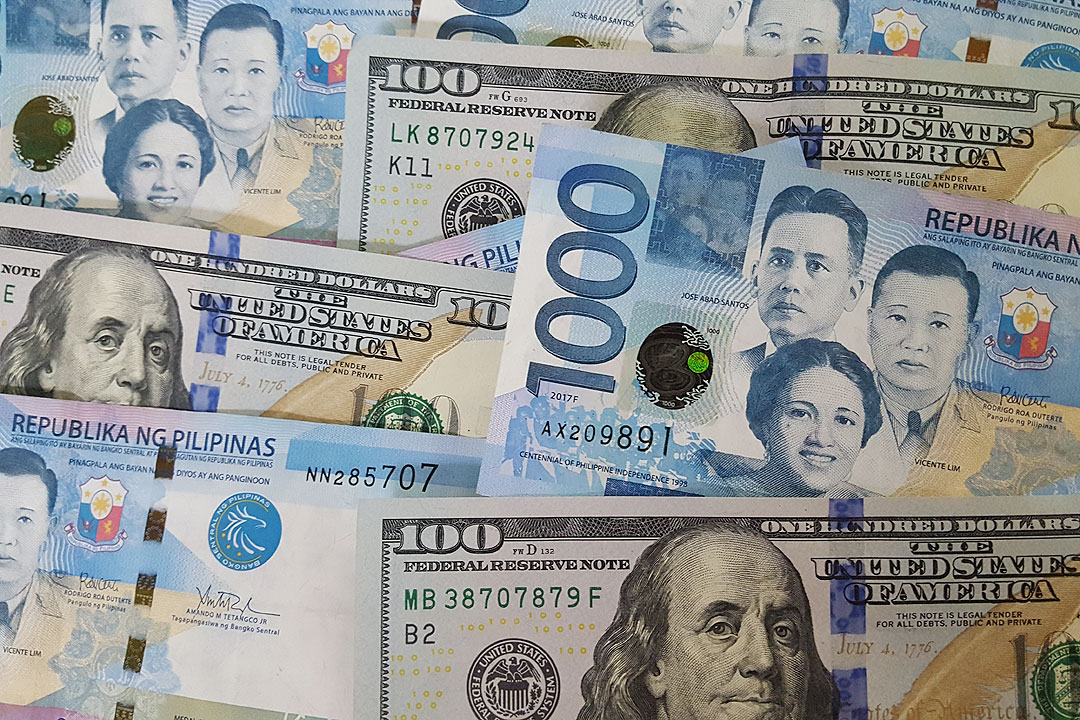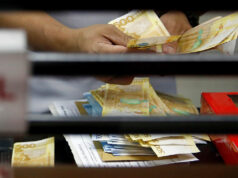Peso sinks to near 3-week low on Fed cut view

THE PESO fell to a near three-week low against the dollar on Monday amid market expectations of slower rate cuts by the US Federal Reserve next year.
The local unit closed at P58.671 per dollar on Monday, weakening by 20.1 centavos from its P58.47 finish on Friday, Bankers Association of the Philippines data showed.
This was the peso’s weakest finish in nearly three weeks or since its P58.71-per-dollar close on Nov. 27.
The peso traded lower than its Friday close throughout the session, opening sharply weaker at P58.60 against the dollar, which was already its intraday best. Its worst showing was at P58.74 versus the greenback.
Dollars exchanged decreased to $1.48 billion on Monday from $1.57 billion on Friday.
The peso weakened amid broad dollar strength as the market digested the possibility of the Fed cutting rates slower than initially expected next year, a trader said by phone.
However, cautiousness ahead of various central bank meetings scheduled this week kept the dollar-peso in a tight trading range throughout the session, the trader added.
The Fed will hold its policy meeting on Dec. 17-18, while the Bank of Japan (BoJ) is scheduled to meet to review policy on Dec. 18-19. The Bangko Sentral ng Pilipinas will hold its own policy meeting on Dec. 19, along with the Bank of England. In Asia, the central banks of Thailand, Indonesia, and Taiwan are also set to meet to review their policy stance this week.
Higher US Treasury yields and global crude oil prices also dragged the peso down, Rizal Commercial Banking Corp. Chief Economist Michael L. Ricafort said in a Viber message.
For Tuesday, the trader sees the peso moving between P58.50 and P58.80 per dollar, while Mr. Ricafort expects the local unit to range from P58.55 to P58.75.
The dollar hovered close to a three-week peak versus major peers on Monday amid expectations the Federal Reserve will cut interest rates this week but then signal a measured pace of easing for 2025, Reuters reported.
Bitcoin soared above $105,000 for the first time, buoyed by signs President-elect Donald J. Trump will go ahead with a potential strategic bitcoin reserve.
The yen struggled to recover following its worst week since September after Reuters and other news outlets reported that the Bank of Japan is leaning towards forgoing a rate hike on Thursday.
The dollar got additional support from climbing US Treasury yields. Traders are confident of a quarter-point Fed rate reduction on Wednesday but now expect officials to forgo a cut in January, according to CME’s FedWatch tool.
With inflation running above the central bank’s 2% annual target, Fed policy makers have stated that recent upticks are part of the bumpy path to lower price pressures and not a reversal of the disinflationary trend.
But analysts say they are also likely to be wary of renewed inflation with Trump set to take office in January.
“The US economy has been resilient in the face of high interest rates, which means the potential for inflation to rise if the economy overheats is a problem the Fed will need to address,” said James Kniveton, a senior FX dealer at Convera.
“There is concern that the incoming administration’s policies may be inflationary, but as the Bank of Canada Governor commented earlier this month, decisions cannot be based on potential US policy, and (Fed Chair) Jerome H. Powell may follow suit.”
The US dollar index — which tracks the currency against the euro, sterling, yen and three other top rivals — was steady at 106.80 as of 0605 GMT, after rising to 107.18 on Friday for the first time since Nov. 26.
The US currency added 0.1% to 153.87 yen, and earlier touched 153.91 for the first time since Nov. 26.
Bitcoin surged as much as 3.6% from Sunday’s close to reach an all-time high of $106,533.
Mr. Trump suggested in an interview with CNBC on Friday that he plans to go ahead with a plan to build a US bitcoin strategic reserve, similar to its strategic oil reserve. — A.M.C. Sy with Reuters



